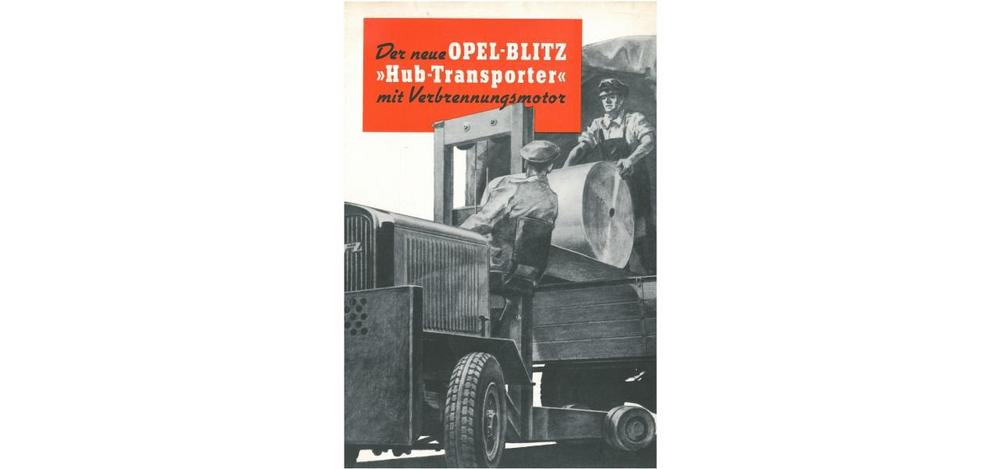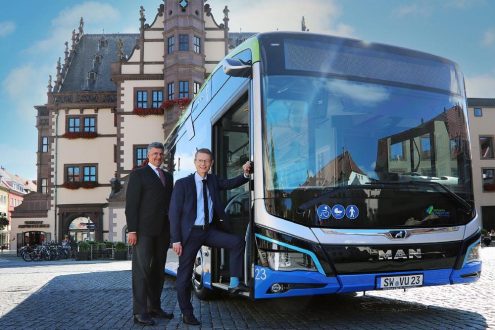
Hidden Gems from 160 Years of Innovation at Opel
- Treasures from the Opel archive: Opel developments that made history
- In the vineyard and field: Opel machines to make life easier in agriculture
- For two-wheelers and planes: Opel makes people mobile on more than four wheels
- Close to world affairs: The newsreel “Opel Wochenschau”
From sewing machines to bicycles to automobiles – the Opel history is rich in treasures. In its 160-year history, the tradition-rich brand has created legendary automotive bestsellers, including the early “Doktorwagen” or Opel Olympia, Kadett and Kapitän as well as the highly successful current models Corsa, Mokka and the new Astra. Making top technologies and innovations affordable for everyone was always the driving force of the company. But this innovative spirit did not just result in iconic cars. Rather, those being responsible have always looked beyond the well-known horizon and developed products "made in Rüsselsheim" that caused quite a stir in their day, but are now sometimes overlooked. "Cool bestsellers" are just as much a part of Opel’s history as true "giants of the field". Opel even took to the skies, later diving into the maritime depths with more than just the Manta. And thus, the company was always up-to-date and also very close to world affairs …
Cork machines made by Opel: What winemakers want
It is no secret that company founder Adam Opel began manufacturing sewing machines in 1862 and that it was not until four years after his death that his wife Sophie and his sons started building automobiles. But few people know that Opel also produced winery machines for ten years from 1885 and was very successful on the German market with them. At the suggestion of winegrowers in the neighbourhood, Adam Opel had included „capsuleers“, i.e. cork machines, in his manufacturing programme and thus became the first German supplier of such products. Despite the good demand, however, a problem soon became apparent: cork machines were a seasonal business. The sewing machines and bicycles that the company had been producing since 1887, on the other hand, kept the production facilities busy all year round. And so, after Adam Opel’s death in 1895, the sons sold the entire production of cellar machines to the Opel employees Blöcher and Lorenz. They went into business for themselves and continued to profit from the good reputation of the “Opel cork machines” for a long time.
Opel as a motor plough pioneer: The giant for the field
Huge steel wheels, a massive engine in front of them, and a metal skeleton jutting out behind them – what is that? A motorised plough! Opel presented this monumental agricultural machine in 1911. At its heart was a newly developed 60-horsepower engine with a ten-liter engine displacement. The power unit was located in front of the wheels to provide a counterweight for the driver and the six ploughshares behind it. With this colossus, Opel wants to offer farmers an alternative to the steam plough. This is because the motorised plough can be operated by just one person. The product description promises “to be able to plough ten to twelve hectares a day on medium-heavy soil.” That would have been a huge labor-saver for the farmer. Would have been. Because as it turned out, the arable land in the Rhine-Main region was too small to use the device sensibly. Production was put on hold, then World War I broke out and the project was not pursued. What remains is the historical distinction that Opel was one of the first companies in the motor vehicle industry to develop an agricultural vehicle.
Two metres up in the air: Pioneering lifting height
On the initiative of Heinrich Müller, then master of the transport department in Rüsselsheim, Opel developed a lifting transporter in 1936. It was available on the open market for 3,750 Reichsmarks. With a payload of three tonnes and a lifting height of two metres, it was considered groundbreaking at the time. At its heart was a 1.5-litre engine with 37 hp/27 kW, as it was also used in the Blitz one-tonner and the 1938 Olympia. Its fuel tank held 30 litres. Actually, it was intended to be driven at a maximum of 40 km/h, but it easily managed more. Around 300 transporters were built. In 1940, Opel sold the production under licence to another German vehicle manufacturer. The main customers were the Deutsche Reichsbahn and the Deutsche Post. In 1976, around 60 Opel Blitz lift trucks were still in use. One of them is now in the German Agricultural Museum in Hohenheim near Stuttgart. And Heinrich Müller is still known to vehicle historians as “Hubmüller” (Lifting-Müller).
The first Opel motorbikes: Motor meets two-wheeler
It is also almost forgotten that Opel was also successfully involved in motorbike development at the beginning of the 20th century. In 1901, Opel called its first motorbike “Motorzweirad” (motorised two-wheeler) – the narrow, long-legged vehicle can hardly deny its descent from the bicycle. But the premiere model already showed the design that was to become established in the following years: the engine was inserted into the frame, the rear wheel driven by a belt. With an engine output of 1 ¾ hp, the vehicle could travel at speeds of up to 40 km/h. It was a success on the market – further models followed. The last Opel motorbike was the Motoclub 500, which was offered from 1928 to 1930. Although modern prototypes were being tested, the new main shareholder General Motors pushed for the discontinuation of this Opel production branch in 1930.
Into the sky: With the Opel aircraft engine
In addition to the motorised plough, the year 1911 holds another premiere in store – the Opel aircraft engine. The demands on aircraft engines in terms of reliability, smoothness and performance had increased enormously around 1910. A challenge that the engine builders in Rüsselsheim were happy to accept. The 65 hp water-cooled Opel four-cylinder is extremely light at around 130 kilogrammes. The basic technical design was based on the engines of the large Opel motorcars of the time. The new engine made its first major appearance at Darmstadt airport. The maiden flight of an Opel engine, carried out by the aviation pioneer August Euler in a biplane, was attended not only by the 71-year-old Sophie Opel and her five sons, but also by Prince Heinrich of Prussia and Grand Duke Ernst Ludwig of Hesse. Six-cylinder aircraft engines are also later manufactured by Opel. However, these were produced under licence during the First World War. The Argus (Type As III O) and BMW (Type IIIa O) designs reveal their Rüsselsheim origins by the suffixed letter “O”. Shortly before the end of the war, the Opel specialists designed a nine-cylinder aircraft engine with 200 hp, which was still being tested but never left the factory.
News from Rüsselsheim: Close to world affairs
During the Weimar Republic, the film industry boomed, cinemas popped up like mushrooms and millions of people flocked to the cinemas. Not only to watch movies, but also to inform themselves about world affairs, social, cultural and sporting events in newsreels. From the mid-1920s onwards there was the “Opel Wochenschau” (Opel newsreel), a news compilation sponsored by the car manufacturer from Rüsselsheim. Excerpts of the “Opel Wochenschau” from 1926 and 1927 are archived in the Federal Archives in Koblenz. You can see short film sequences about the opening of the Zugspitze railway, the 300th anniversary celebrations of New York, but also “The ascent of the award-winning Opel cars” in a flower parade in Frankfurt or daredevil stunts with vehicles bearing the Opel logo. As was usual with newsreels at the time, the features are a silent sequence of films, with panels of information inserted in between. What seems unspectacular today was electrifying for viewers at the time. For the first time, they could participate in events from all over the world with their own eyes.
Throughout the decades, Opel has had its finger on the pulse of time with many other developments beyond the automobile that will surprise the people today. If you want to know how the company became a "home furnishing company", for example, or what Opel has to do with fast-paced winter sports: part 2 of the mini-series on the "hidden treasures from the Opel archive" (coming before Christmas, too) contains more interesting stories about objects, some of which have even attained cult status – and which should no longer be missing from any Opel model today.
Opel Automobile GmbH
Bahnhofsplatz
65423 Rüsselsheim
Telefon: +49 (6142) 7-70
Telefax: +49 (6142) 77-8409
http://de-media.opel.com/de
Telefon: +49 (6142) 6927466
E-Mail: leif.rohwedder@opel-vauxhall.com
![]()




